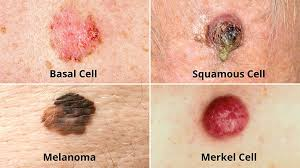Anatobee Patient Cases
1/48
There's no tags or description
Looks like no tags are added yet.
Name | Mastery | Learn | Test | Matching | Spaced |
|---|
No study sessions yet.
49 Terms
Trisomy 21 (Down Syndrome)
flattened face, nose bridge
almond shaped eyes slanting up
short neck
small ears
tongue sticks out
palmar crease (single line across palm of hand)
white spots on iris
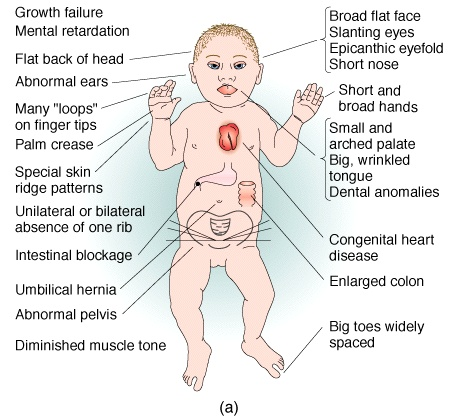
Trisomy 18
decreased muscle tone (hypotonia)
low-set ears
internal organs forming or functioning differently
severe cognitive/ intellectual development
overlapping fingers and/or clubfeet

Cleft lip with and without cleft palate
openings or splits in upper lip and/or roof of mouth (palate)
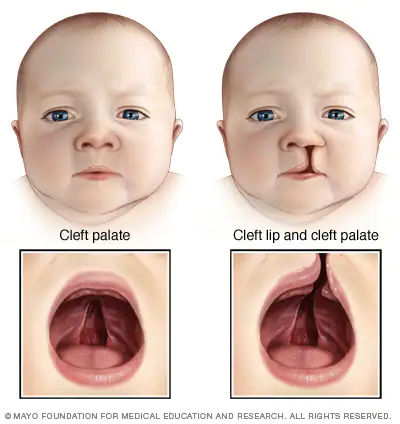
Atrial Septal Defect
birth defect in which a hole is present in the wall (septum) that divide the upper chambers of the heart (atria)
symptoms:
frequent heart and lung infections
difficulty breathing
tiring when feeding (in infants)
shortness of breath when active or exercising
skipped heartbeats
Ventral Septal Defect
birth defect in which a hole is present in the wall (septum) that divide the lower chambers of the heart (ventricles)
symptoms:
shortness of breath
fast and hard breathing
paleness
fast heartrate
failure to gain weight
frequent respiratory infections
sweating while feeding (in infants)
Anophthalmia
birth defect where baby is born without one or both eyes
Microphthalmia
birth defect where one or both eyes are not fully developed and appear small
Truncus Arteriosus
rare congenital heart defect where a single blood vessel comes out of the heart, instead of usual two (main pulmonary artery and aorta)
symptoms include blue/purple tint to lips, skin, nails (cyanosis); poor eating and poor weight gain; rapid breathing or shortness of breath; profuse sweating, especially with feeding; more sleepiness than normal; unresponsive/ baby seems “out of it”
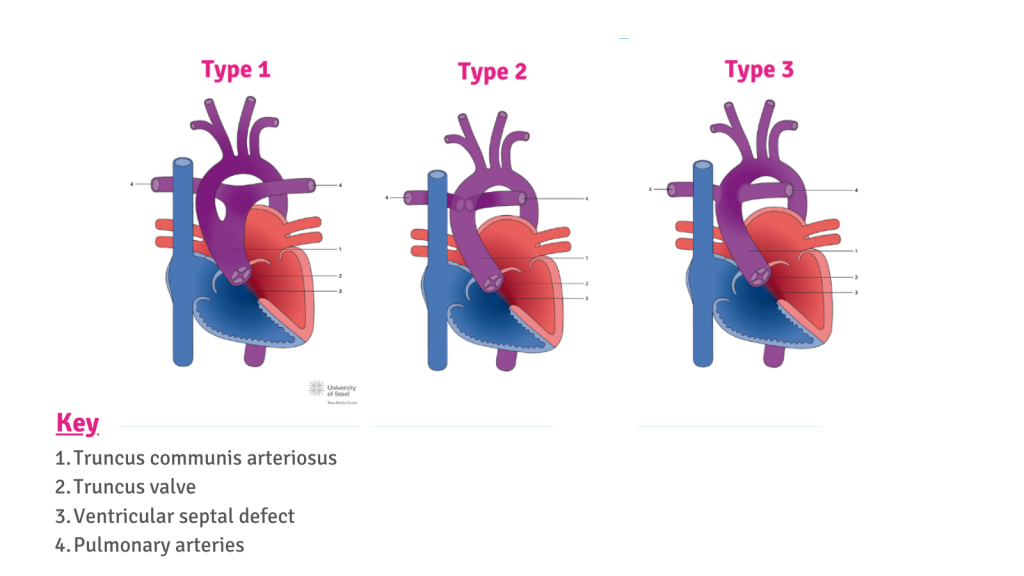
Patent ductus arteriosus/common truncus
In hearts with a common arterial trunk (truncus arteriosus), there is almost always an inverse development of the aortic arch and the ductus arteriosus. Truncus with a normal aortic arch and a patent ductus is a rare echocardiographic and surgical finding.
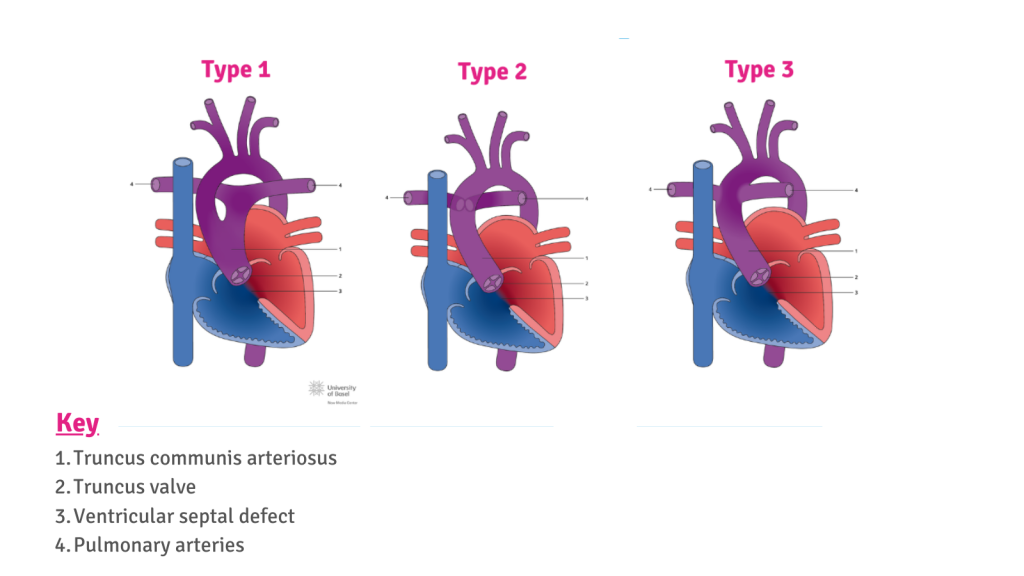
Tracheoesophageal fistula
an abnormal connection in at least one place between the esophagus (connects throat to stomach) and trachea (connects throat to windpipe and lungs). normally these two tubes are not connected
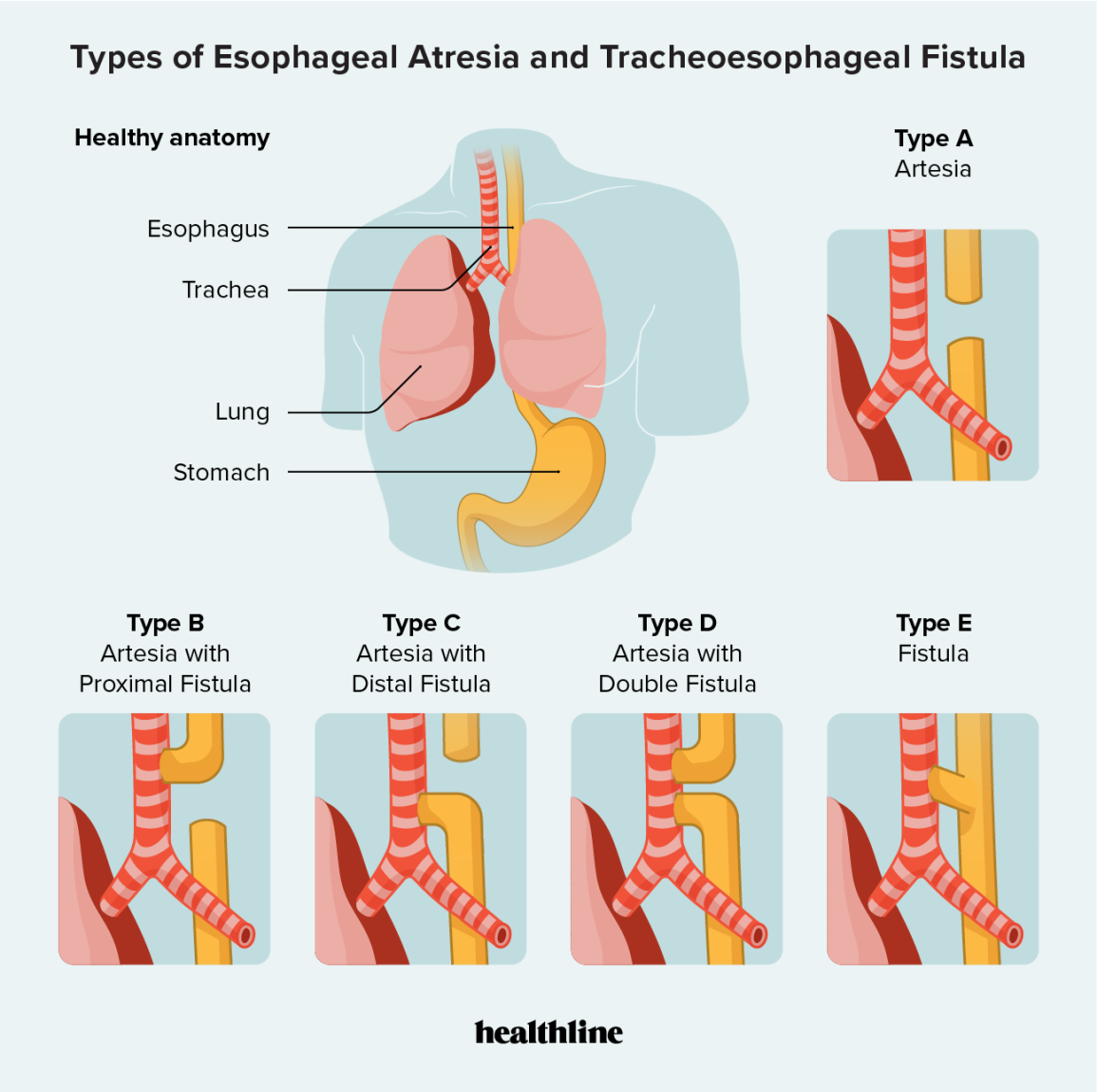
Esophageal atresia
A congenital disorder in which the esophagus does not properly form during pregnancy. Symptoms include coughing, choking, and turning blue when feeding (from lack of oxygen).
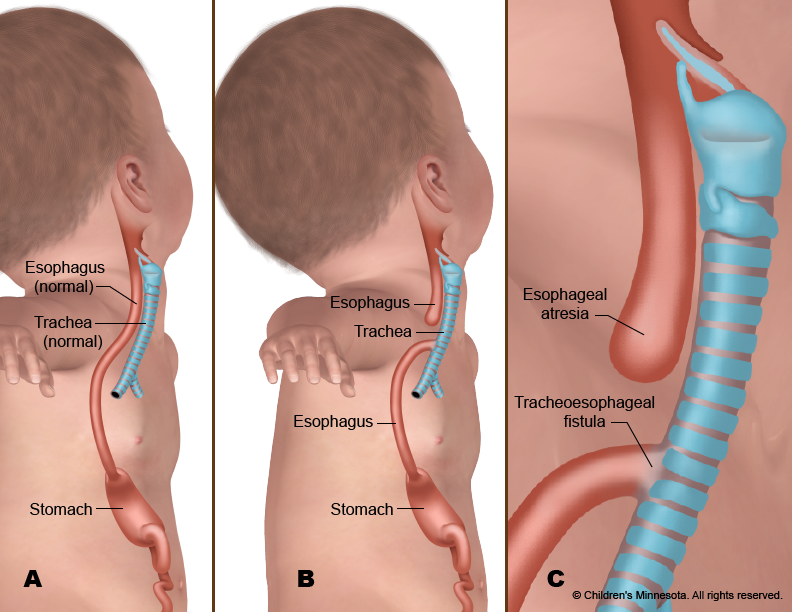
Anencephaly
Birth defect where the baby is born without parts of head or skull fully formed.
type of neural tube defect (NTD)
as the neural tube forms and closes, it helps form the baby’s brain and skull (the upper part of the neural tube), spinal cord, and backbones (lower part of neural tube)
symptoms are underdeveloped skull and unconciousness
life expectancy of few hours to few days after birth
no cure
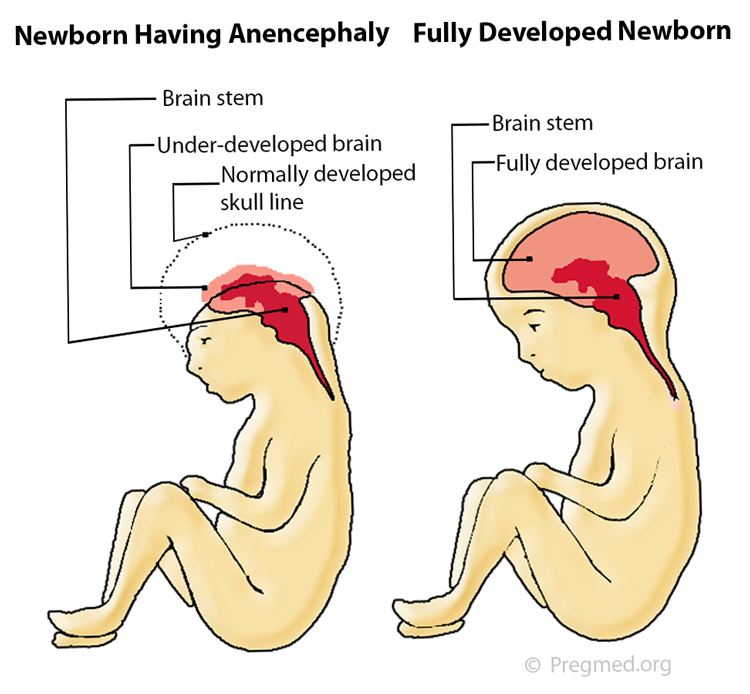
Omphalocele
Birth defect of abdominal wall where internal abdominal organs, like intestines and liver, stick out side of belly through belly button. “Sac” is protected by a thin translucent membrane.

Umbilical hernia
same as omphalocele but sac is completely covered by skin
Birth defect of abdominal wall where internal abdominal organs, like intestines and liver, stick out side of belly through belly button
Encephalocele
Congenital neural tube defect where the sac containing the brain/ meninges/ cerebral fluid forms outside the skull due to bone defects. Can occasionally be caused by trauma or tumors.
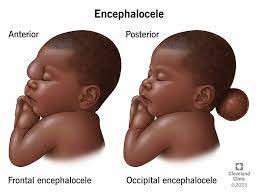
Rectal and large intestinal atresia/stenosis
Describes broad group of rare congenital conditions of lower intestinal tract (bowel). Atresia refers to a complete blockage while stenosis refers to a partial blockage.
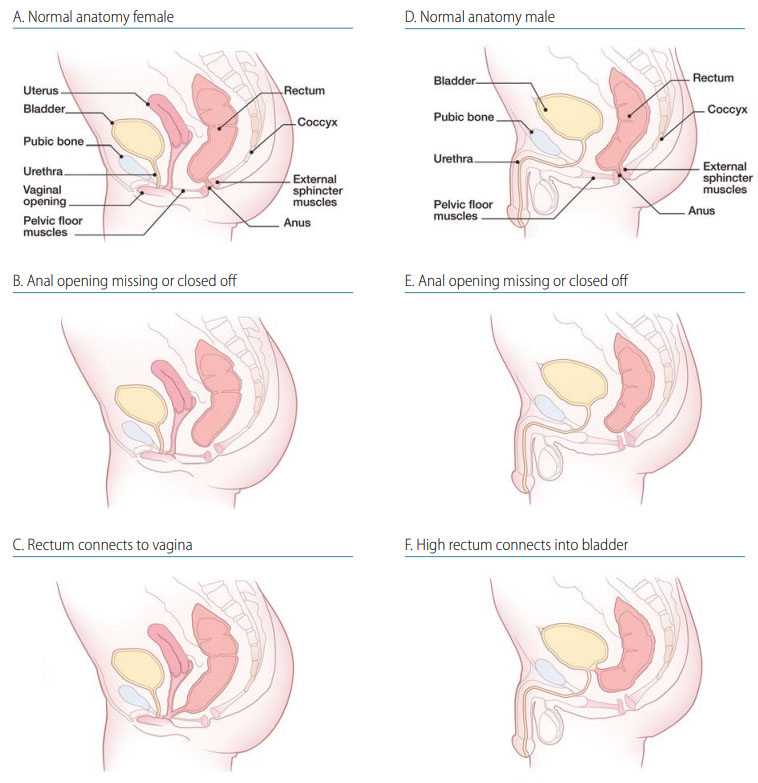
Spina bifida without anencephaly
Split spine; birth defect in which the spine does not properly form
Symptoms include incontinence (bladder and bowel problems), [birthmark, hair, or protruding spinal cord tissue on skin above defect], sexual dysfunction, weakness, paralysis, or loss of sensation below defect, orthopedic dysfunctions like club feet
Reduction deformity of upper and lower limbs
When part of limb fails to fully form during pregnancy. Caused by exposure of the mother to certain chemicals or viruses while she is pregnant or exposure of the mother to certain medications. (Possibly exposure of the mother to tobacco smoking (although more research is needed))
Diaphragmatic hernia
Birth defect where there is a hole in the diaphragm. Organs in the abdomen (such as intestines, stomach, and liver) can move through the hole in the diaphragm and upwards into a baby's chest.
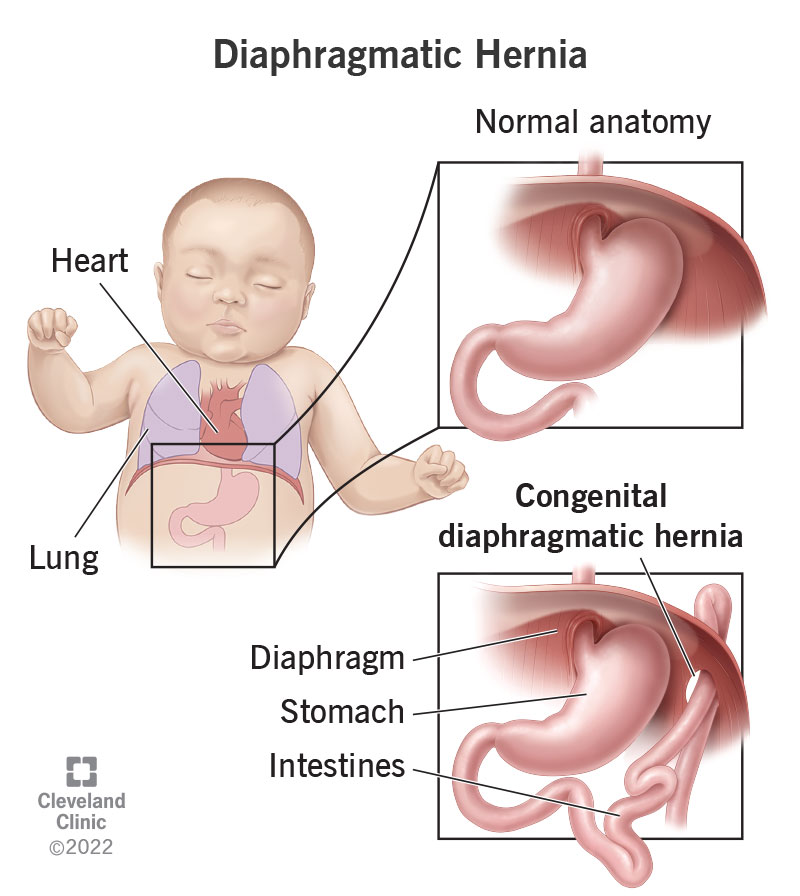
Arthritis
General inflammation or swelling of joints. Symptoms include joint pain, stiffness, lower range of motion, possible discoloration. Treatments include medication and physical therapy.
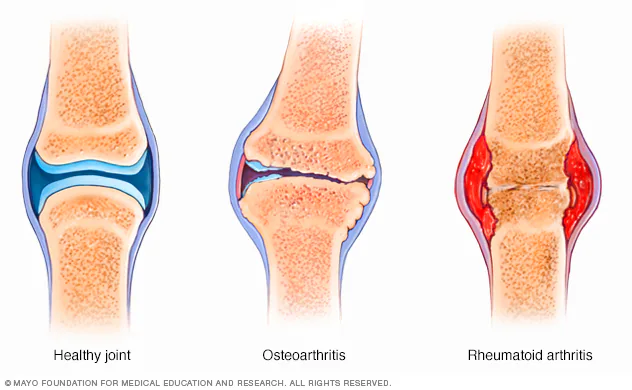
Osteoporosis
A bone disease developing when bone mineral density and bone mass decreases or when the structure and strength of bone changes. The decrease in bone strength makes them more fragile and prone to breaking. Symptoms include back pain and poor posture.
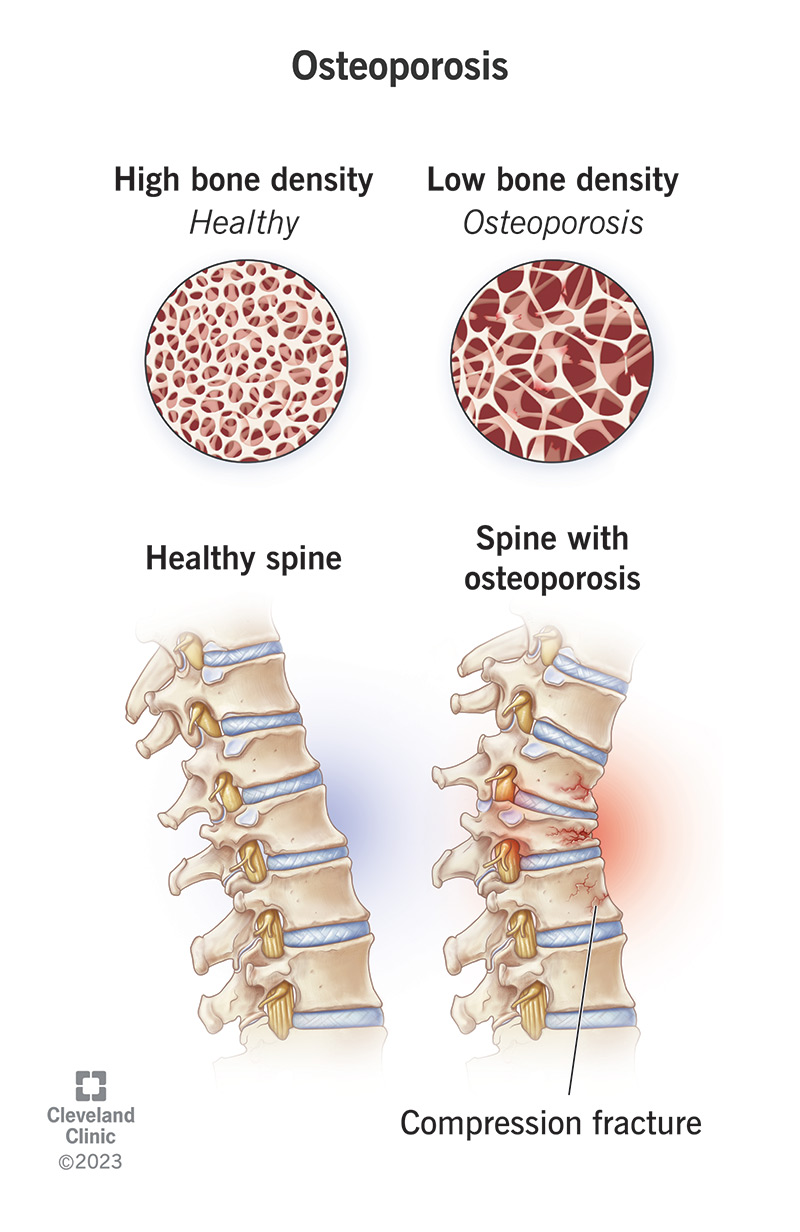
Herniated vertebral disc/radiculopathy
The disks that lie between the vertebrae in the spine consist of a soft center (nucleus) surrounded by a tougher exterior (annulus). A herniated disk occurs when a portion of the nucleus pushes through a crack in the annulus. Symptoms may occur if the herniation compresses a nerve and include pain, numbness, tingling, or weakness in the arms, legs, or back. (radiculopathy refers to symptoms produced by the pinching of a nerve in the spinal column.)
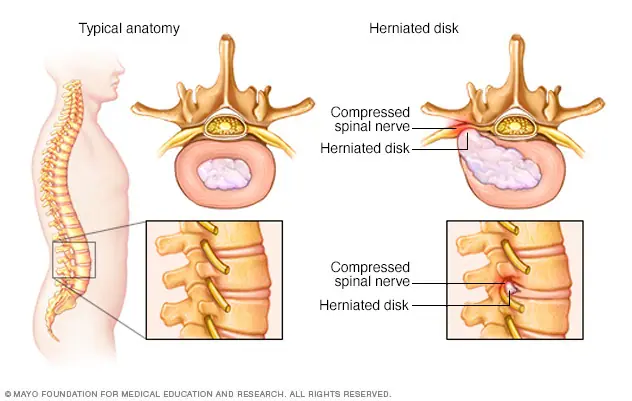
Muscular Dystrophy (MD)
A group of genetic diseases that cause progressive weakness and degeneration of skeletal muscles. Most forms begin in childhood and most people who have the condition eventually need a wheelchair or Other symptoms include trouble breathing or swallowing. Medications, therapy, breathing aids, or surgery may help maintain function, but life span is often shortened.
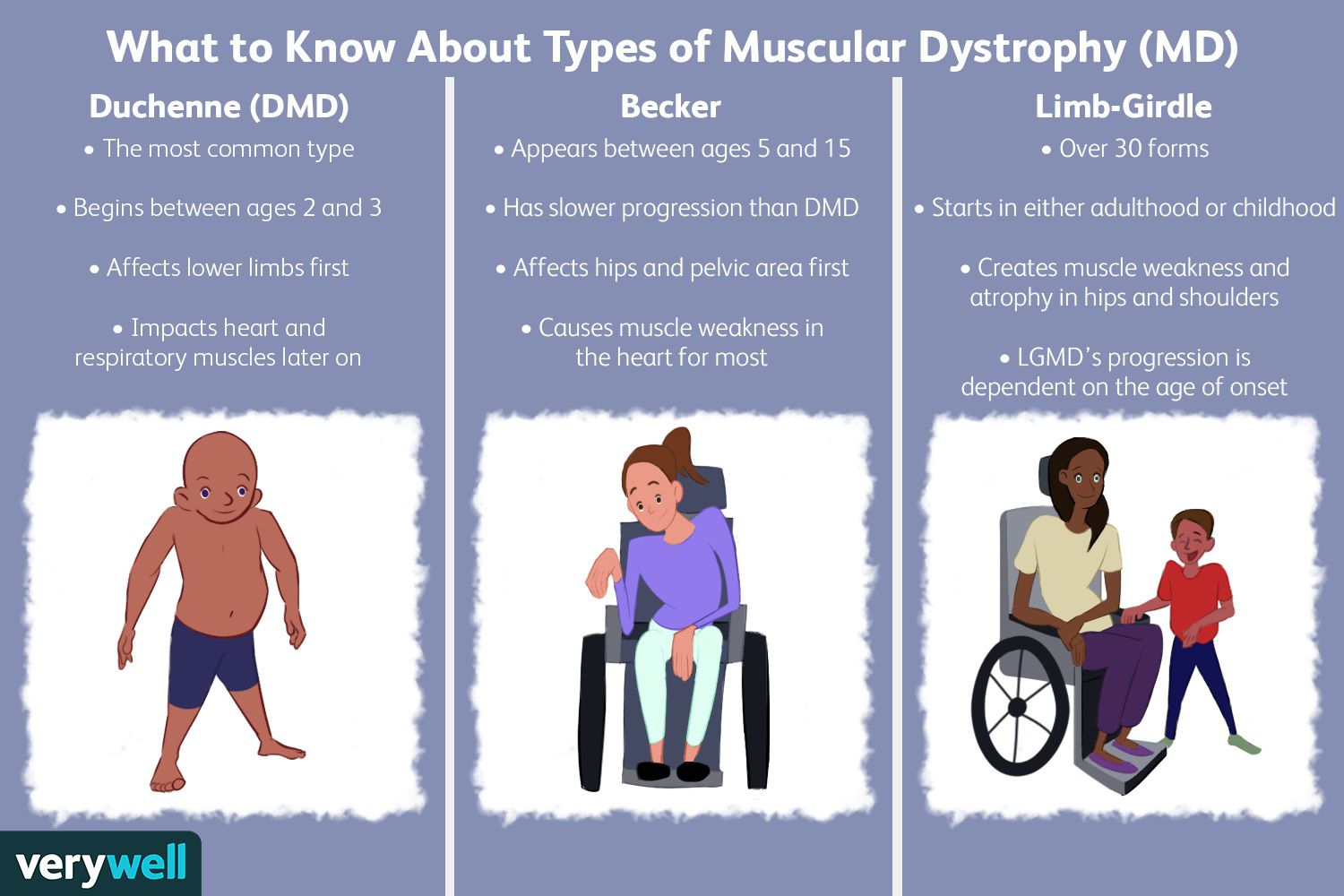
Multiple sclerosis (MS)
Chronic autoimmune disease affecting the central nervous system. The nervous system eats away at itself, causing nerve damage. Symptoms include fatigue, vision problems, numbness, tingling, muscle spasms, weakness, stiffness, pain (in back or eyes with head or eye movement), mobility issues, impaired coordination
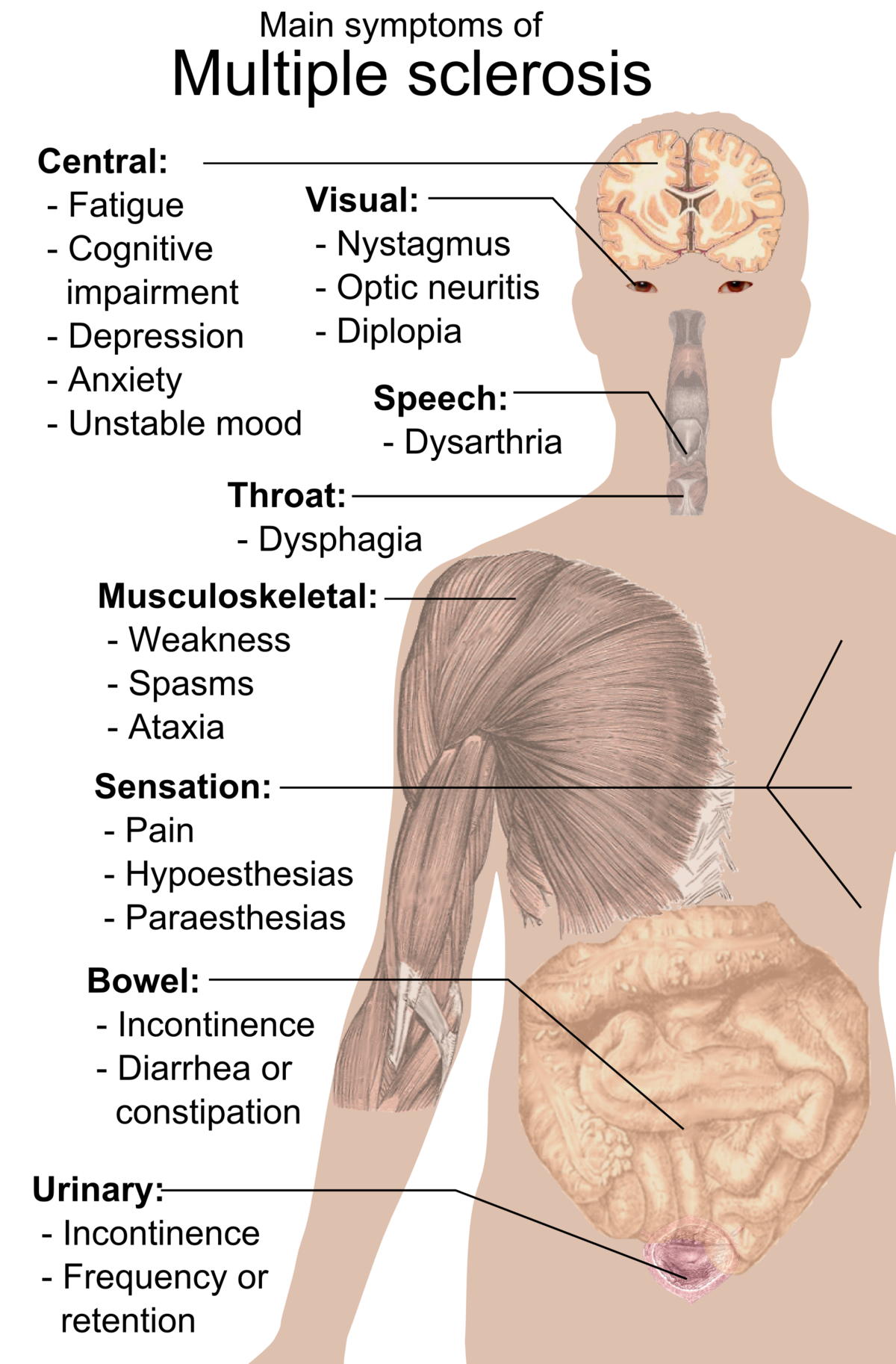
Alzheimer’s disease
Most common type of dementia
Brain cell connections and the cells themselves degenerate and die, eventually destroying memory and other important mental functions.
Progressive, starts with mild memory loss leading to loss of the ability to follow a conversation or interact with environment
Memory loss and confusion are the main symptoms.
forget about recent conversations or events
misplace items
forget the names of places and objects
have trouble thinking of the right word
ask questions repetitively.
show poor judgement or find it harder to make decisions
become less flexible and more hesitant to try new things
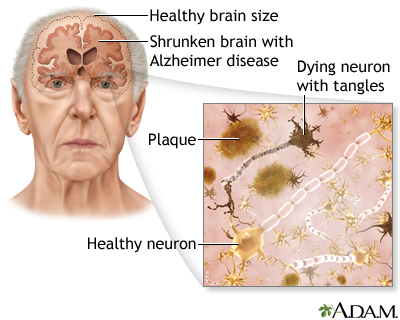
Heart Disease
Includes coronary artery disease, arrythmia, cardiac arrest, hypertension, cardiac arrest, congestive heart failure
Symptoms include some mix of chest pain, shortness of breath, coughing or wheezing, swelling in extremities, fatigue, irregular or fast heartbeat
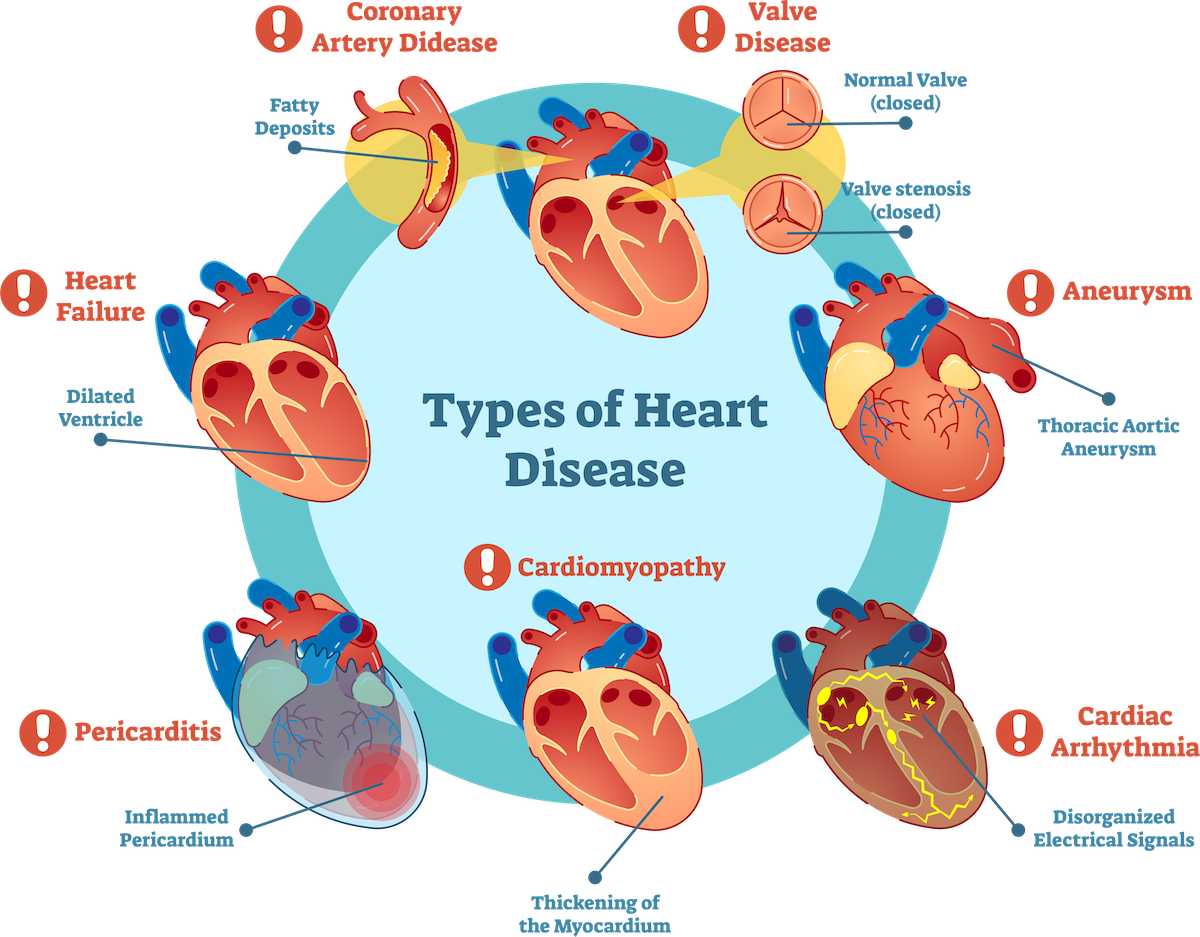
Anemia
A problem of not having enough healthy red blood cells or hemoglobin to carry oxygen to the body's tissues. Symptoms include fatigue, weakness, shortness of breath, brittle nails, blue color to white part of eyes, sometimes desire to eat ice or non-food items, pale skin color, vertigo, shortness of breath, sore or inflamed tongue, mouth ulcers
Stroke (also called CVA, cerebrovascular accident)
Ischemic strokes are caused by blocked arteries (87% of all strokes)
Hemorrhagic stokes are caused by “brain bleeds” or aneurism (13% of all strokes)
Symptoms include trouble walking, speaking, and understanding, as well as paralysis or numbness of the face, arm, or leg
those who are overweight, inactive, drink lots of alcohol, use recreational drugs, have high cholesterol, hypertension, poorly controlled diabetes, obstructive sleep apnea, or heart disease are at greater risk
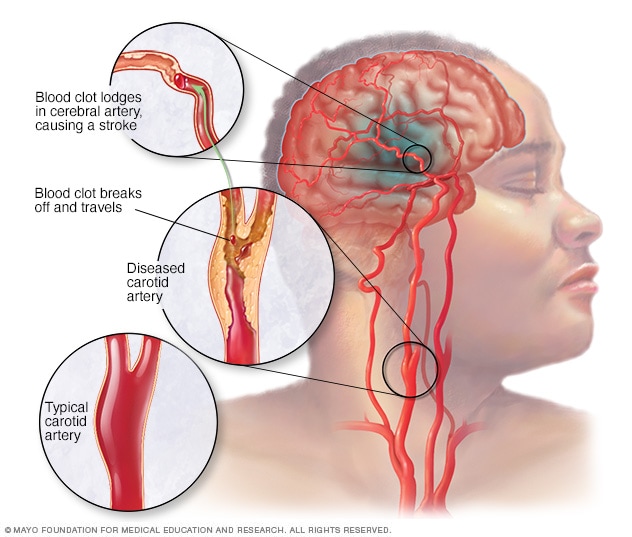
Psoriasis
Chronic disease in which the immune system becomes overactive, causing skin cells to multiply too quickly
Patches of skin become scaly and inflamed, most often on the scalp, elbows, or knees, but other parts of the body can be affected as well
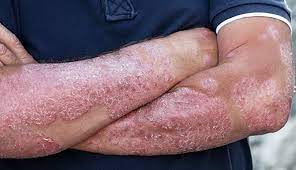
Asthma
Chronic lung disease
Affects all ages
Caused by inflammation and muscle tightening around the airways, making it harder to breathe. A person's airways become inflamed, narrow, and swell, and produce extra mucus, which makes it difficult to breathe
Symptoms can include coughing, wheezing, shortness of breath and chest tightness. These symptoms can be mild or severe and can come and go over time
Can flare up due to overactivity
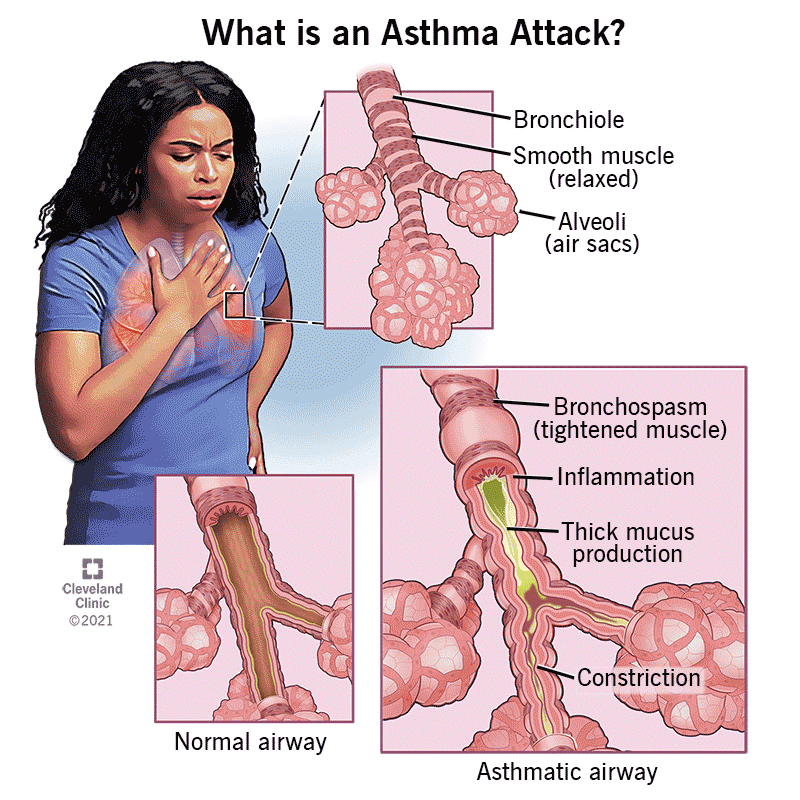
Gallstones
Hardened deposits of digestive fluid; hard, pebble-like pieces of material, usually made of cholesterol or bilirubin, that form in the gallbladder
Gallstones can range in size from a grain of sand to a golf ball. The gallbladder can make one large gallstone, hundreds of tiny stones, or both small and large stones.
Symptoms include steady, severe pain in the upper abdomen that increases rapidly and may last from 30 minutes to several hours, pain in the back between the shoulder blades, pain in right shoulder, fever, nausea, vomiting, chills, jaundice
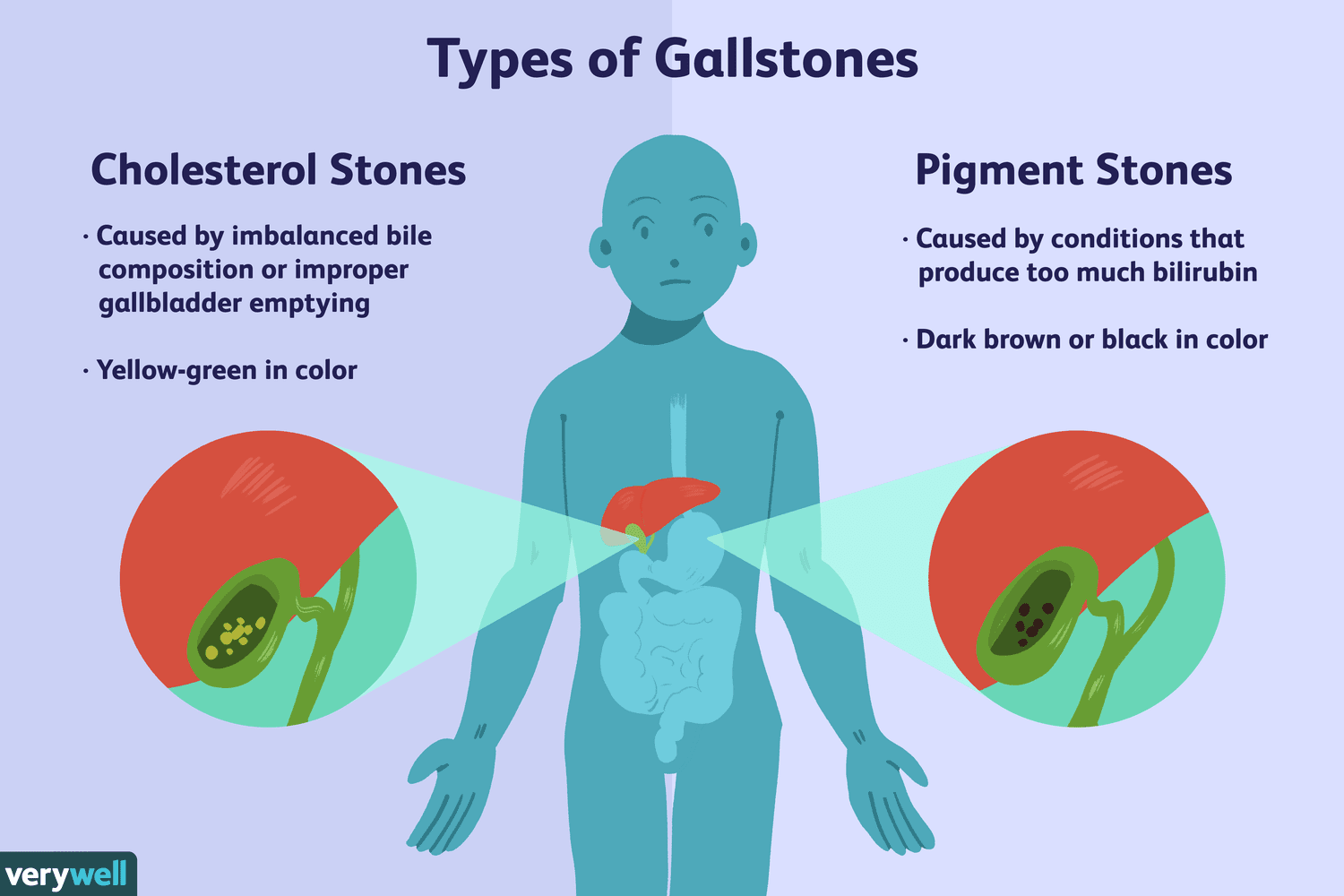
Liver cirrhosis
Chronic liver damage leading to scarring and liver failure
Worsened by excess alcohol consumption
Symptoms include fatigue, weakness, weight loss. In later stages patients may develop jaundice, gastrointestinal bleeding, abdominal swelling, and confusion
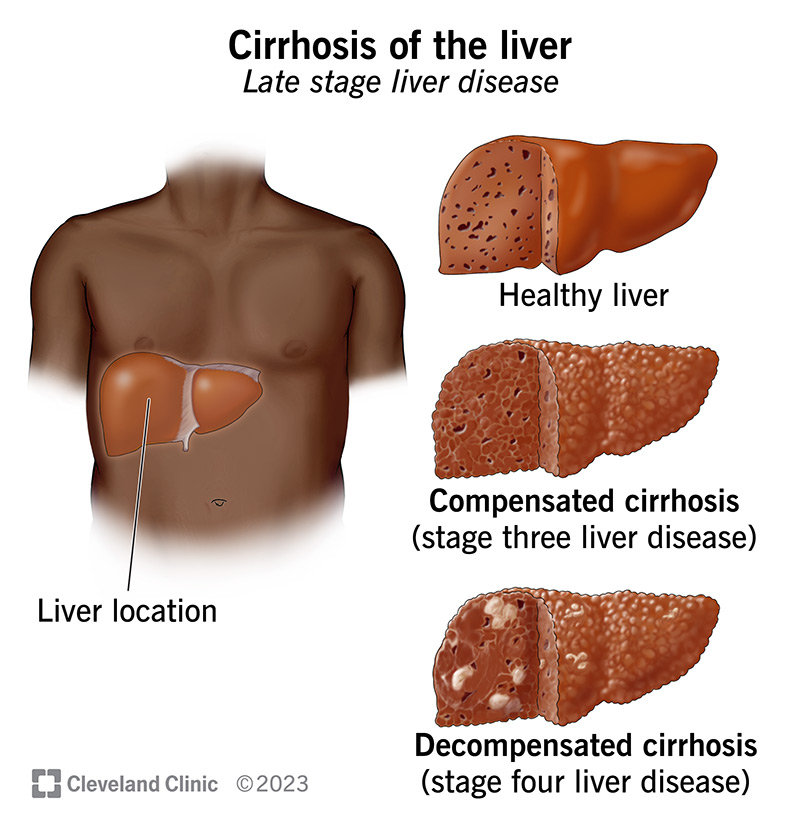
Diabetes
Chronic condition where the body doesn’t produce enough insulin
When there isn't enough insulin or cells stop responding to insulin, too much blood sugar stays in your bloodstream. Over time, that can lead to heart disease, vision loss, and kidney disease.
Type 2: body has trouble controlling blood sugar and using it for energy
Type 1: present since birth; pancreas makes little or no insulin, leading to high blood sugar levels
Prediabetes: blood sugar is higher than '“healthy”, but not high enough to be considered type 2
Gestational: causes high blood pressure during pregnancy
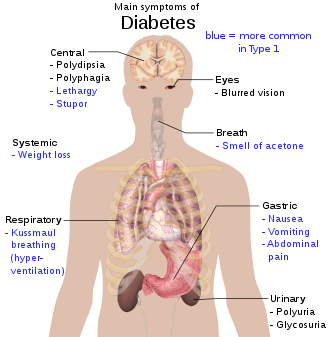
Gastroesophageal reflux disease (GERD)
Condition in which contents of the stomach move up through the esophagus, irritating the lining
Chronic disease
Symptoms:
heartburn after eating, worsens while laying down
backwash of food
dysphagia (difficulty swallowing)
sensation of lump in the throat
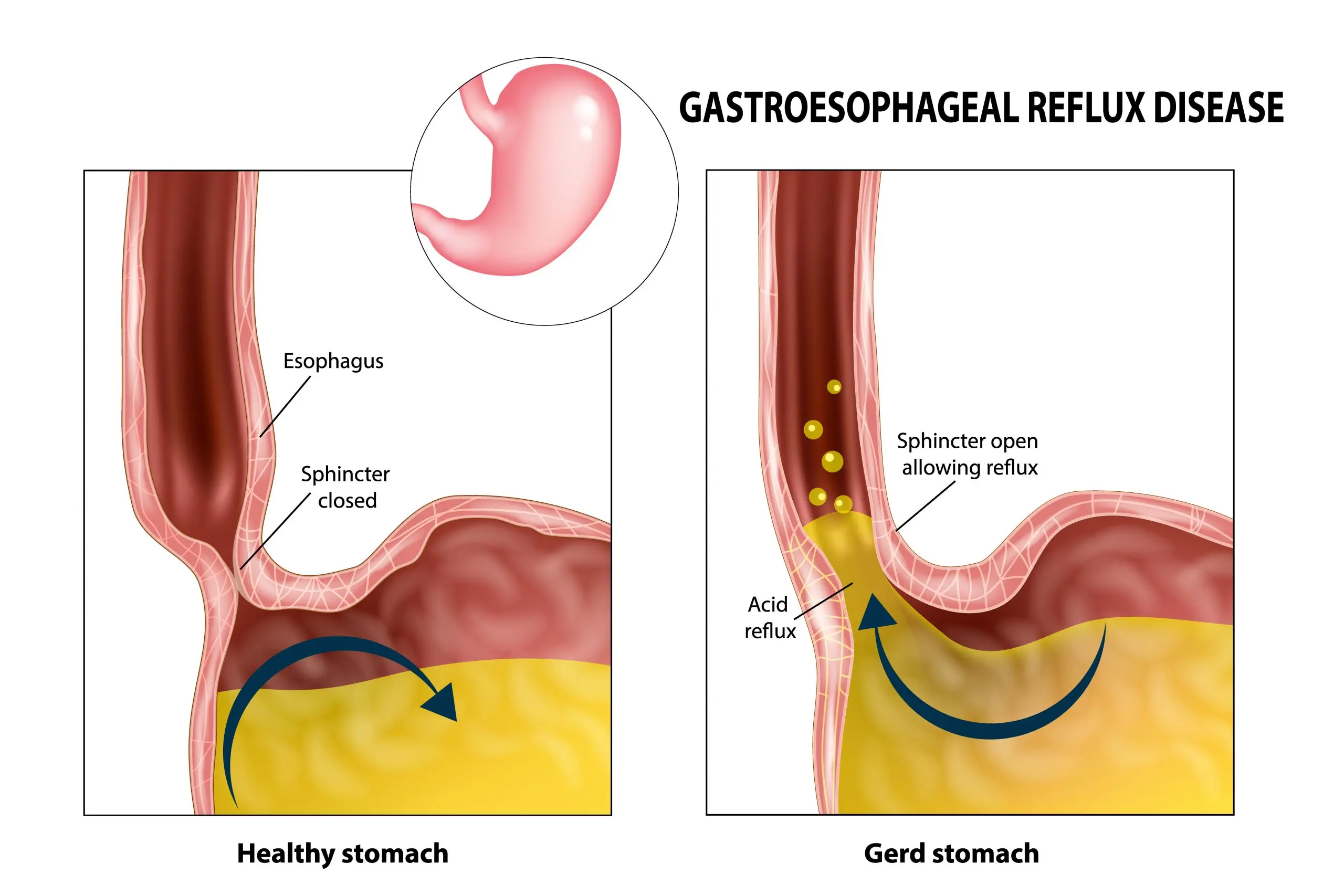
Gastric/peptic ulcer
A sore on the lining of your stomach, small intestine, or esophagus. Main symptom is abdominal pain, it varies in place from person to person
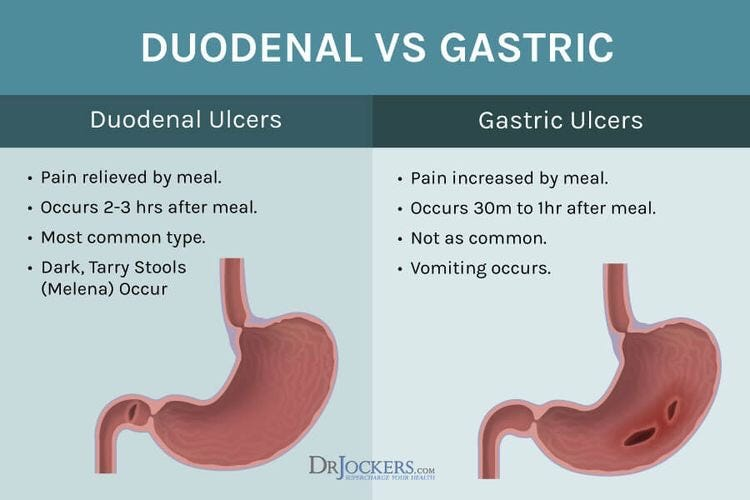
Irritable bowel syndrome (IBS or spastic colon)
An intestinal disorder causing pain in the belly, gas, diarrhea, and constipation. Symptoms include abdominal pain, bloating, gas, change in bowel habits, abdominal swelling, diarrhea, and constipation.
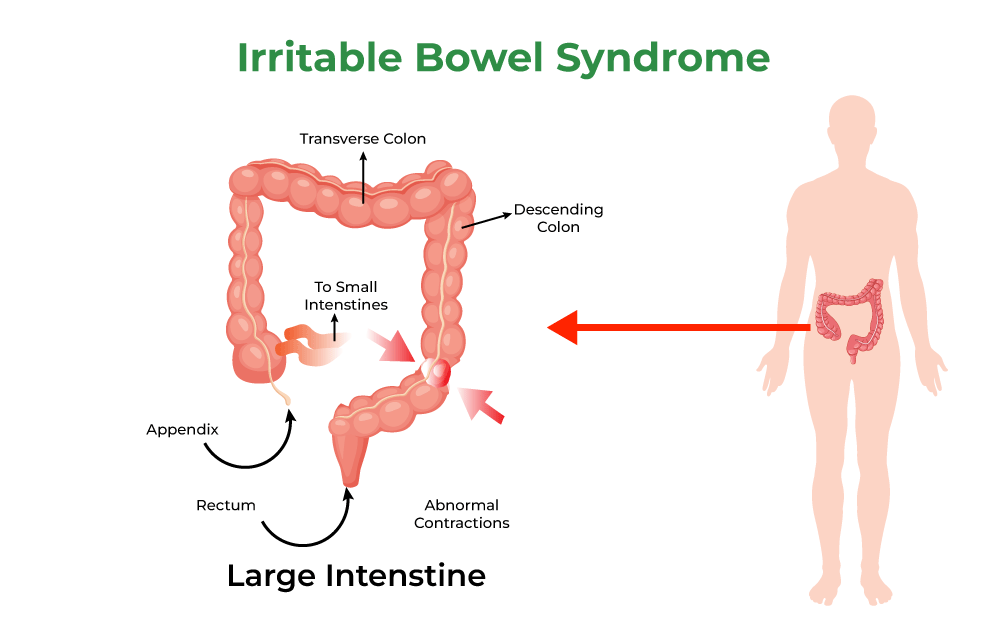
Celiac Disease
An immune reaction to eating gluten, a protein found in wheat, barley, and rye
Over time the lining of the intestines wears away which can lead to malabsorption of nutrients
Symptoms include bloating, weight loss (can lead to missed periods), pale bad-smelling stool, numb or tingling in legs, tingling, infertility, gas, fatigue, low blood count (anemia), and osteoporosis
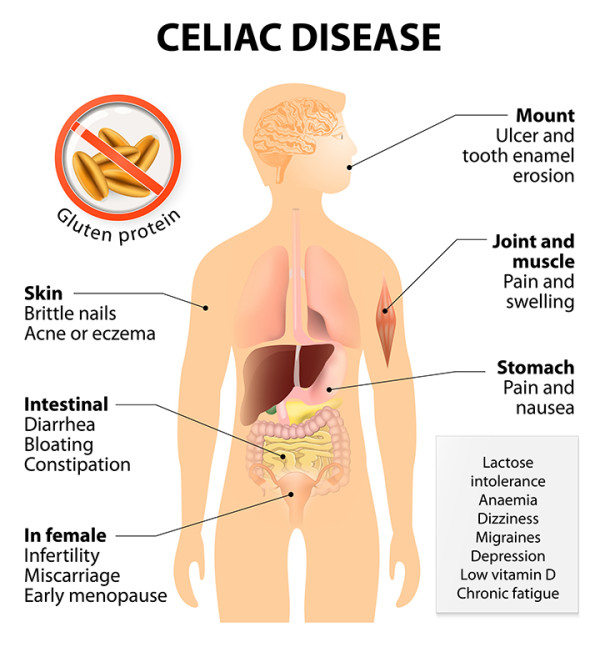
Benign Prostatic Hyperplasia (BPH)
Age-associated (50+) prostate gland enlargement that can cause urination difficulty (not a precursor to prostate cancer)
symptoms include frequent urination, trouble starting to pee, urination at night
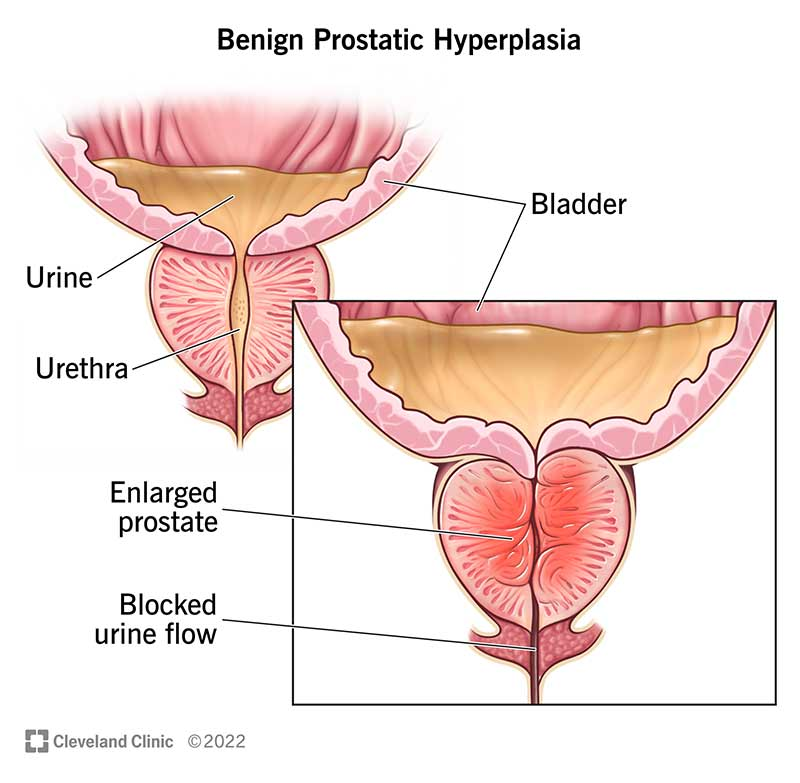
Ectopic Pregnancy
A pregnancy that can't be carried to term because the fertilized egg grows outside the uterus
Symptoms include light bleeding from the vagina, pain in the pelvis, shoulder pain can occur if blood leaks from the fallopian tube
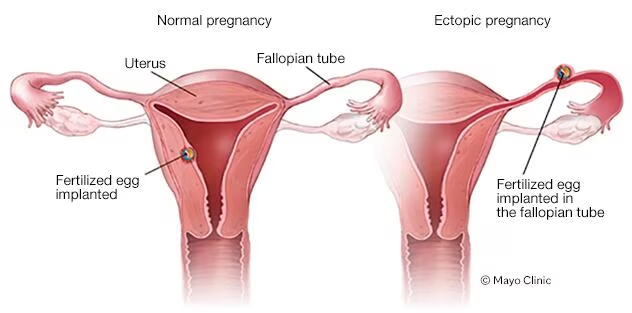
Polycystic Ovarian Syndrome (PCOS)
a hormonal condition causing enlarged ovaries with small cysts on the outer edges
symptoms include irregular menstruation, excess hair growth, obesity, and acne
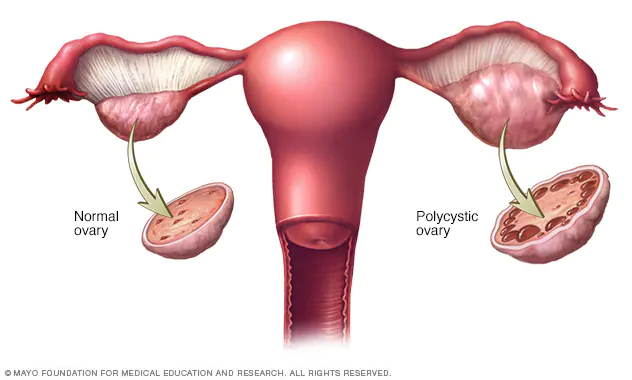
Sexually-transmitted infection (STI)
caused by bacteria, viruses, parasites, or fungi
transmitted through sexual contact
can sometimes be transmitted to baby if mother is infected while pregnant
symptoms include
sores or bumps on genitals or in rectal or oral areas
painful or burning urination
discharge from penis
unusual vaginal discharge or bleeding
lower abdominal pain
painful sex
swollen lymph nodes, especially in groin
Hyperthyroidism
Overproduction of hormones produced in thyroid
Symptoms:
enlarged thyroid
increased metabolism
unexpected weight loss
irregular or fast heartbeat
sweating
irritability
elderly may not show any symptoms
can be caused by autoimmune disorders or malnutrition causing goiter
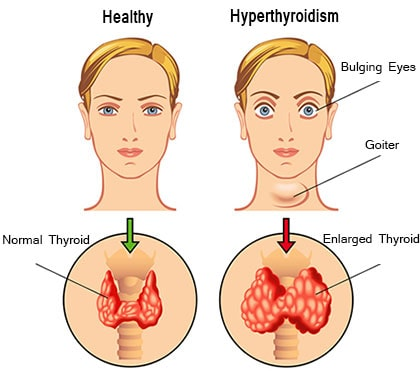
Hypothyroidism
Underproduction of hormones produced in thyroid
Symptoms:
fatigue
cold sensitivity
unexpected weight gain
constipation
delayed puberty
dry skin
brittle nails
can be caused by autoimmune disorders like Hashimoto’s Disease
Pituitary adenoma
tumors of the anterior pituitary gland
mostly slow-growing and benign
symptoms related to over or underproduction of hormones produced by the pituitary gland
Prolatinoma causes vision problems from putting pressure on nerves and optical structures or infertility from unbalanced hormones
Somatotroph cell adenoma causes growth in the hands and feet because of soft tissue swelling from overproduction of growth hormones
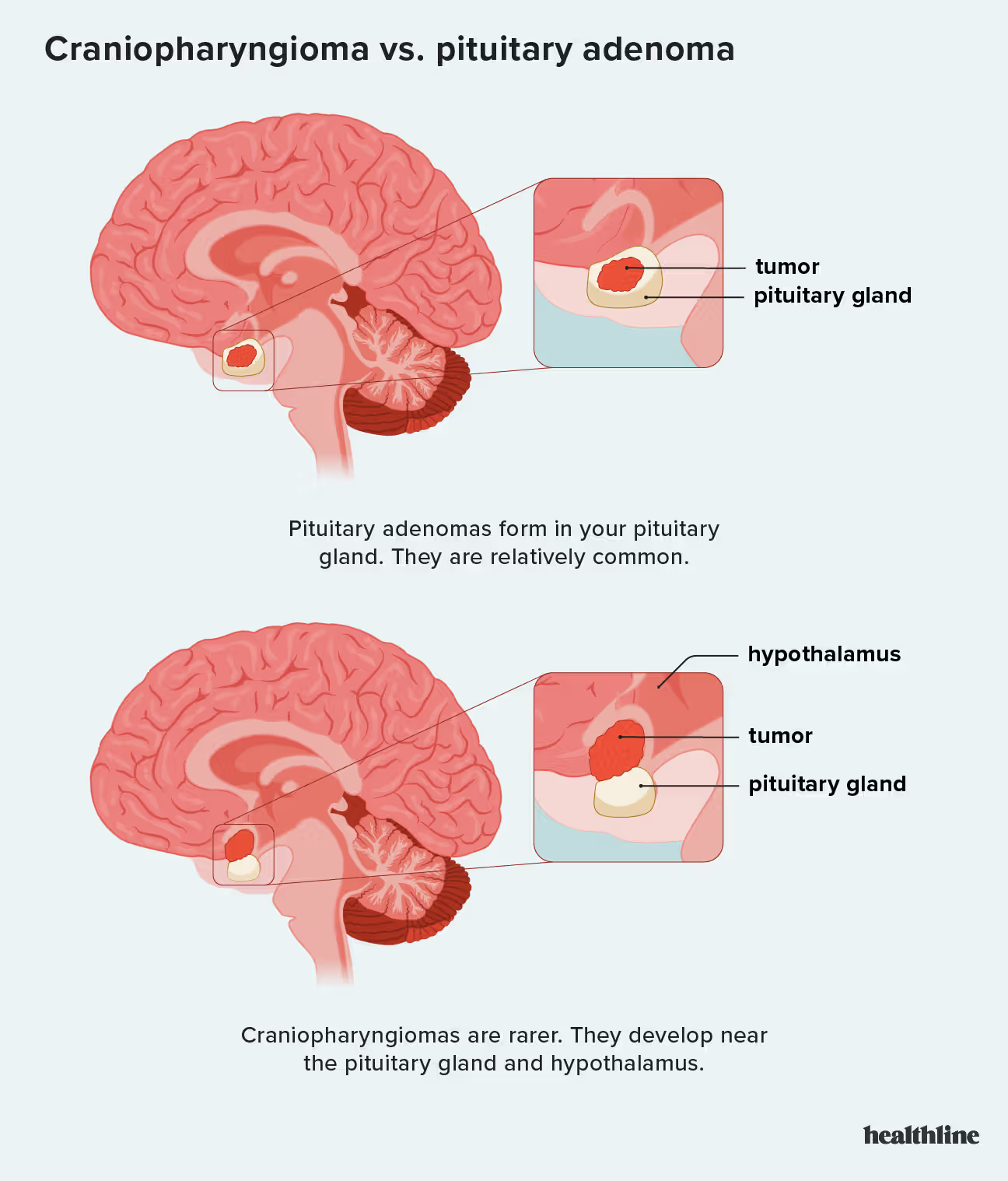
Breast cancer/ carcinoma
Cancers of the breast
Can affect women but also men
Symptoms include a lump in the breast, bloody discharge from the nipple, breast pain, and changes in the shape or texture of the nipple or breast
More general symptoms include fever and swollen lymph nodes

Lung Cancer
Third most common cancer in the U.S.
Occurs most often in people who smoke
Two major types are small cell lung cancer and non-small cell lung cancer
non-small cells behave similarly whereas small cell lung cancer spreads more rapidly and usually starting in the bronchi before metastasizing
Symptoms include cough (often with blood), dull or sharp pain in the chest or ribs, wheezing, unexplained weight loss, shortness or breath, difficulty breathing
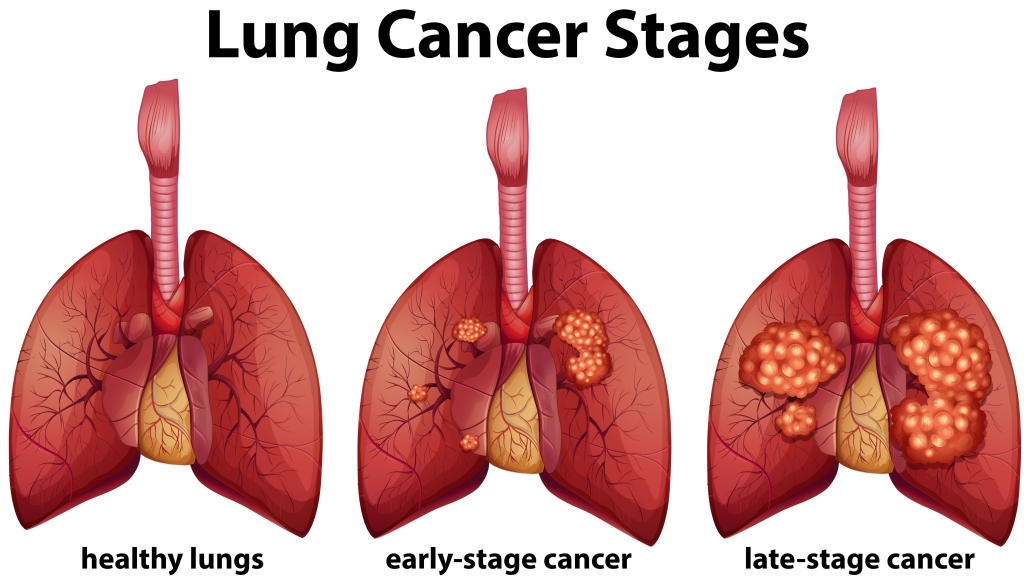
Prostate cancer
A cancer in a man's prostate, a small walnut-sized gland that produces seminal fluid that nourishes and transports sperm
Symptoms could be difficulty with urination but there are often none at all
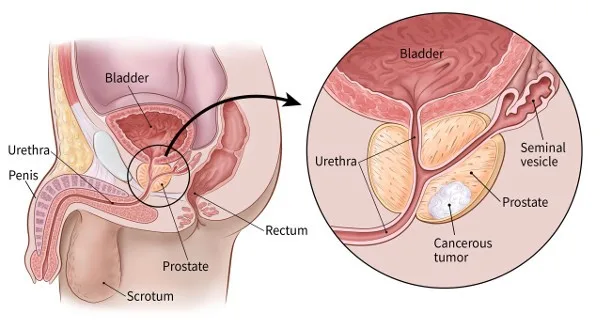
Colon cancer
cancer of the colon or rectum, may begin as noncancerous polyp
Symptoms: blood in stool, abdominal pain, constipation, anemia, fatigue
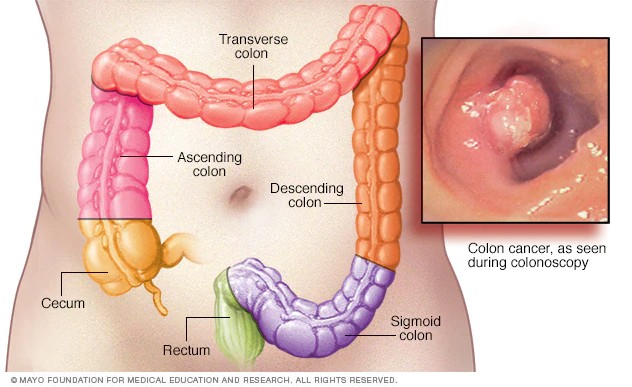
Skin cancer
Some basal cell carcinomas may appear as raised, pink or red, translucent, shiny, pearly bumps that may bleed after a minor injury. They may have a lower area in their center, and blue, brown, or black areas.
Types include basal cell cancers, melanomas, squamous cell carcinomas
